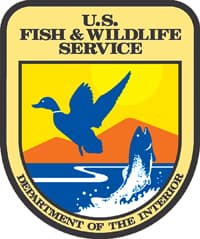U.S. Fish and Wildlife Service Proposes Protection for Bolivian Parrot
OutdoorHub 01.14.13

The U.S. Fish and Wildlife Service announced today a proposal to protect the blue-throated macaw as endangered under the Endangered Species Act. This vividly colored species is only found in a small area of remaining tropical savanna in north-central Bolivia, and there are estimated to be fewer than 200 individuals left in the wild.
The Service has carefully assessed the best available scientific and commercial information regarding the past, present, and future threats to this species and found that this species is clearly in danger of extinction. The blue-throated macaw population continues to decrease despite intense conservation efforts. The primary threat to the species is lack of suitable nest sites due to diminished habitat that is also leading to increased predation by larger avian species and competition for nests.
The Service has made this determination in response to a petition filed on May 6, 1991, from the International Council for Bird Preservation to list 53 foreign birds under the ESA, including the blue-throated macaw that is the subject of this proposed rule. On December 16, 1991, the Service made a positive 90–day finding and announced the initiation of a status review of the species included in the 1991 petition. On March 28, 1994, the Service published a 12–month finding on the 1991 petition, announcing a finding that listing 38 species from the 1991 petition, including the blue-throated macaw, was warranted but precluded because of other listing actions.
Within the past few hundred years, the blue-throated macaw lost much of its remaining habitat due to the conversion of palm forests to ranches or pastures for cattle grazing. Another cause for the decline of this species’ population was likely due to collection for museums during the late 1800s and early 1900s. The species is now only found in widely dispersed isolated pairs, primarily restricted to sparse forested islands among natural grasslands. Conservation efforts are underway through educational awareness programs on top of research and monitoring, but require significant effort and time.
The proposed rule published in the Federal Register on January 10, 2013. The Federal Register publication of the rule is available online at http://www.fws.gov/policy/frsystem/default.cfm by clicking on the 2013 Proposed Rules under Endangered and Threatened Wildlife and Plants.
Written comments and information concerning the proposed listing can be submitted by one of the following methods:
- Federal eRulemaking Portal: http://www.regulations.gov. Follow the instructions for submitting comments to Docket No. [FWS-R9-ES-2012-0034]; or
- U.S. mail or hand delivery: Public Comments Processing, Attn: [FWS-R9-ES-2012-0034]; Division of Policy and Directives Management; U.S. Fish and Wildlife Service; 4401 N. Fairfax Drive, MS 2042–PDM; Arlington, VA 22203.
The Service is also seeking comments from independent species experts and peer reviewers. Any final action resulting from this proposed rule will be based on the best scientific and commercial data available and be as accurate and as effective as possible. The Service particularly seeks clarifying information concerning:
- Taxonomy, distribution, habitat selection and trends (especially breeding and foraging habitats), diet, and population abundance and trends (especially current recruitment data) of this species.
- Effects of habitat loss and changing land uses on the distribution and abundance of this species and its principal food sources over the short and long term.
- Whether changing climatic conditions (i.e., increasing intensity of storms or drought) are affecting the species, its habitat, or its food sources.
- Effects of other potential threat factors, including live capture and collection, predation by other animals, and diseases of this species or its principal food sources over the short and long term.
- Management programs for its conservation, including mitigation measures related to conservation programs, and any other private or governmental conservation programs that benefit this species.
- Genetics and taxonomy.
- Factors that are the basis for making a listing determination for a species under section 4(a) of the ESA, which are:
- The present or threatened destruction, modification, or curtailment of its habitat or range;
- Overutilization for commercial, recreational, scientific, or educational purposes;
- Disease or predation;
- The inadequacy of existing regulatory mechanisms; or
- Other natural or manmade factors affecting its continued existence.
Comments on each proposed rule must be received within 60 days, on or before March 11, 2013. The Service will post all comments on http://www.regulations.gov. This generally means the agency will post any personal information provided through the process. The Service is not able to accept email or faxes.
Addition of a foreign species to the Federal List of Endangered and Threatened Wildlife places restrictions on the importation of either the animal or its parts. Listing can also generate conservation benefits, such as increasing awareness of the species, prompting research efforts to address their conservation needs, or funding conservation in range countries.

